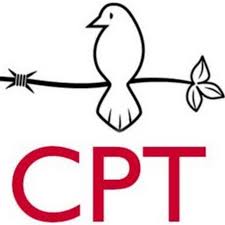Questions about the Islamic State in Iraq, aka ISIS, IS, DAASH
by Peggy Faw Gish.
CPT has been monitoring the checkpoint into the KRG where tens of thousands of Iraqi Christians, Yazidi, Turkmen, Shabak and Shia have been fleeing ISIS advances
Many analysts of the current situation in Iraq had predicted that the Islamic State of Iraq and SHAM (ISIS), renamed the “Islamic State” (IS) a month ago by the group (and also called “DAASH” by the Kurds in the KRG) would make a major offensive on Baghdad before the end of Ramadan.
Jessica Lewis, a former American military intelligence officer with several years of service in Iraq, describes IS as capable of both guerilla style warfare and conventional warfare, and predicts it will attack soon, first the bases around the city and important government buildings.
The Institute for the Study of War, a U.S.-based think tank, which has been analyzing IS activity in Iraq, reports that the coordinated suicide attacks conducted around Baghdad in predominantly Shia areas on 19 July, demonstrate that ISIS has infiltrated highly coordinated sleeper cells into the city. Their analysts predict that the coming attack will likely be in the form of guerrilla and terrorist offensive, rather than a huge conventional military assault. It would be intent on instilling chaos and fear and keeping the Iraqi government focused on defending the capital rather than mounting an offensive to retake Mosul and other captured territory.
Other journalists and local Kurdish Iraqis question IS’s ability to attack Baghdad now, seeing that recent IS advances in Iraq have slowed down but increased in Syria, where they are meeting stiff resistance, and that they are engaged in current battles with Iraqi forces north of Baghdad, trying to defend captured territory. Instilling fear and building a reputation of fear seems an important strategy. A recent example is the video IS released (reported by Reuters on 29 July) warning Iraqi soldiers to leave their posts and join them, or face execution.
Kurdish and Iraqi news sources report almost daily skirmishes between Kurdish Peshmerga and IS fighters, somewhere along the front line between Kurdish controlled areas and IS-controlled areas. Deaths from these battles are usually no more than a handful or two. So far, IS has not taken any substantial areas held by the KRG, though they do control some of Iraq’s oilfields and dams.
Thankfully, some of the earlier claims made about IS’s demands and actions around the city of Mosul have proven to be false, such as reports that the Islamic State had issued a fatwa ordering women to undergo female genital mutilation (FGM) that the Islamic State had burned down the St. Ephrem's Cathedral in Mosul and that it had looted Mosul’s central bank. This false propaganda however, has been reported alongside real threats and atrocities. Our team has seen the effects IS’s threats and presence has had on the daily life of the people of Iraq. Last week human rights organizations in Iraq estimated that the number of people in Iraq displaced by the crisis, reached 1,250,000 and is likely to rise.
Kurdish people we talk to in Suleimani are fearful IS cells will infiltrate into the KRG with those displaced people coming in, and worry as well about the economic strain from Syrian refugees and refugees from other parts of Iraq pouring into the KRG.
“Of course, we are glad we may achieve an independent Kurdish state,” a Kurdish man, Hawar*, recently told our team, voicing some common sentiments held by Kurds in the KRG, “but we are also afraid. We hear horrible things about DAASH. What if after they attack Baghdad, they turn around and come up and attack us? Will we be able to fight them off? This is a frightening time for all of us.”

